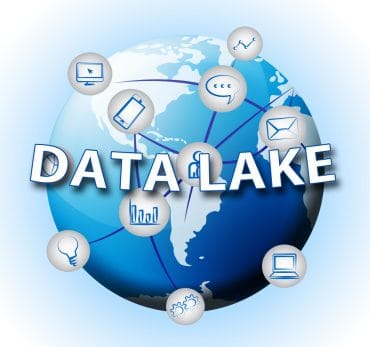
Solutions that bridge the gap between mainframe and cloud environments allow organizations to take advantage of the strengths of both platforms. By leveraging such solutions, businesses can lower costs, improve agility, and make the most of their cloud investments.
It’s hard to believe we are celebrating the 60th anniversary of the mainframe. This milestone offers an opportunity to reflect on its evolution from a pioneering computing giant to an indispensable cornerstone of modern technology infrastructure. Despite its six-decade-long existence, the mainframe remains crucial in powering essential business operations worldwide. It’s remarkable that many mainframe applications, created 50 to 60 years ago, continue to perform so effectively today.
Yet despite the mainframe’s success and vital role in the global economy and daily operations, it is often overlooked or viewed negatively. Many people unfamiliar with the mainframe see it as a “legacy system” due to its age. However, while the original architecture was developed 60 years ago, the mainframe platform is updated every two years with new processors, software, and enhanced capabilities. Unfortunately, these advancements are often overshadowed by the industry’s focus on cloud computing and AI.
There is a common perception in the tech world that mainframe and cloud technologies are mutually exclusive — that organizations must choose one over the other. Mainframe professionals may question the appeal of cloud platforms, noting that many functions performed by the cloud can also be handled by the mainframe. On the other hand, cloud developers often wonder why anyone wouldn’t utilize the modern capabilities that the cloud offers.
The truth is mainframe and cloud technologies can — and should — coexist.
The Strengths of the Mainframe
Mainframes have long been the backbone of enterprise computing, renowned for their security, reliability, scalability, and ability to handle massive transaction volumes with unmatched speed and security. Industries such as banking, insurance, and healthcare depend heavily on mainframes for mission-critical applications due to their robustness and high availability.
Mainframe computers excel at large-scale batch and transaction processing, offering unparalleled performance for applications requiring extreme precision and security. Their capacity to integrate and process data from multiple sources in real time is invaluable for organizations with extensive legacy systems.
See also: Real-time Decisions – On your Mainframe!
The Power of Cloud Computing
Cloud computing provides exceptional flexibility and scalability. It allows businesses to adapt quickly to changing demands by provisioning resources on-demand, minimizing the need for significant upfront IT infrastructure investments. The cloud serves as a catalyst for rapid innovation, enabling businesses to deploy and scale applications swiftly.
Cloud platforms also offer a wide array of tools and technologies, such as artificial intelligence, machine learning, data analytics, and IoT integration. This makes the cloud an ideal environment for developing new applications and services that require flexibility and agility.
The Complementary Nature of Mainframe and Cloud
By combining mainframe and cloud technologies, businesses can leverage the strengths of both platforms. Mainframes can continue to support core business operations with high security and reliability, while cloud services enhance agility and drive innovation.
Here’s how these two technologies complement each other:
- Scalability and Flexibility: Mainframes handle high-volume transaction processing efficiently, while the cloud offers the flexibility to scale applications and services according to business needs.
- Cost-Effectiveness: Offloading less critical workloads to the cloud reduces the load on mainframes, optimizing costs and improving resource allocation.
- Innovation and Modernization: The cloud provides a platform for developing and testing new applications without disrupting existing mainframe operations, facilitating digital transformation and modernization efforts.
- Enhanced Data Analytics: Mainframes process vast amounts of data, which can be analyzed in the cloud using advanced analytics tools to derive insights and drive business decisions.
- Improved Disaster Recovery: Cloud-based backup and recovery solutions ensure data redundancy and protect critical information against unexpected outages or disasters.
A Real-World Example: Storage
Despite the obvious benefits, it is not always easy to get mainframe and distributed environments to work together. Let’s consider how to bring them together using a typical scenario in a distributed environment.
If I have a Linux server in my data center and need additional storage, I can easily spin up and connect to a cloud storage environment. If I need that extra storage for a day, I only pay for what I use. This kind of flexibility would be ideal for mainframes but historically hasn’t been available.
The Traditional Approach
Traditionally, mainframes rely on Direct Access Storage Devices (DASD) and virtual tape for storage. Compared to modern cloud storage, these options are more expensive and far less flexible. Organizations must plan and purchase storage ahead of time for future needs, which might not be fully utilized for months. Given the vast amounts of data generated by mainframe applications, customers need more flexibility and scalability to scale up or down without unnecessary costs.
A New Approach That Combines the Mainframe and Cloud
In distributed environments, on-demand access to cloud storage is a given, but cutting-edge solutions are now bringing that same flexibility to mainframe systems. Forward-thinking innovators in the mainframe and cloud data access space have developed transformative technologies that allow mainframe users to seamlessly create data volumes that connect directly to cloud storage.
These groundbreaking instant mainframe storage solutions make it possible for mainframe files to appear local while harnessing the scalability and agility of cloud infrastructure. This innovation revolutionizes how businesses manage their data, providing unprecedented flexibility with on-demand cloud storage and ensuring they only pay for the resources they actually use. This shift marks a new era in mainframe storage, blending the best of legacy reliability with the limitless potential of cloud technology.
Importantly, these products are designed to work seamlessly with existing mainframe security and other software, enabling organizations to maintain the same level of control and protection they are accustomed to on their mainframes. This is an excellent example of how mainframe and cloud technologies can work together to add value.
A Final Word on the Continued Impact of the Mainframe
There is a lot of discussion around modernizing applications on the mainframe but far less attention is given to modernizing data and improving access to legacy formats. Solutions that bridge the gap between mainframe and cloud environments allow organizations to take advantage of the strengths of both platforms.
By leveraging such solutions, businesses can lower costs, improve agility, and make the most of their cloud investments. More innovations like this are needed to drive further progress in the industry.






























